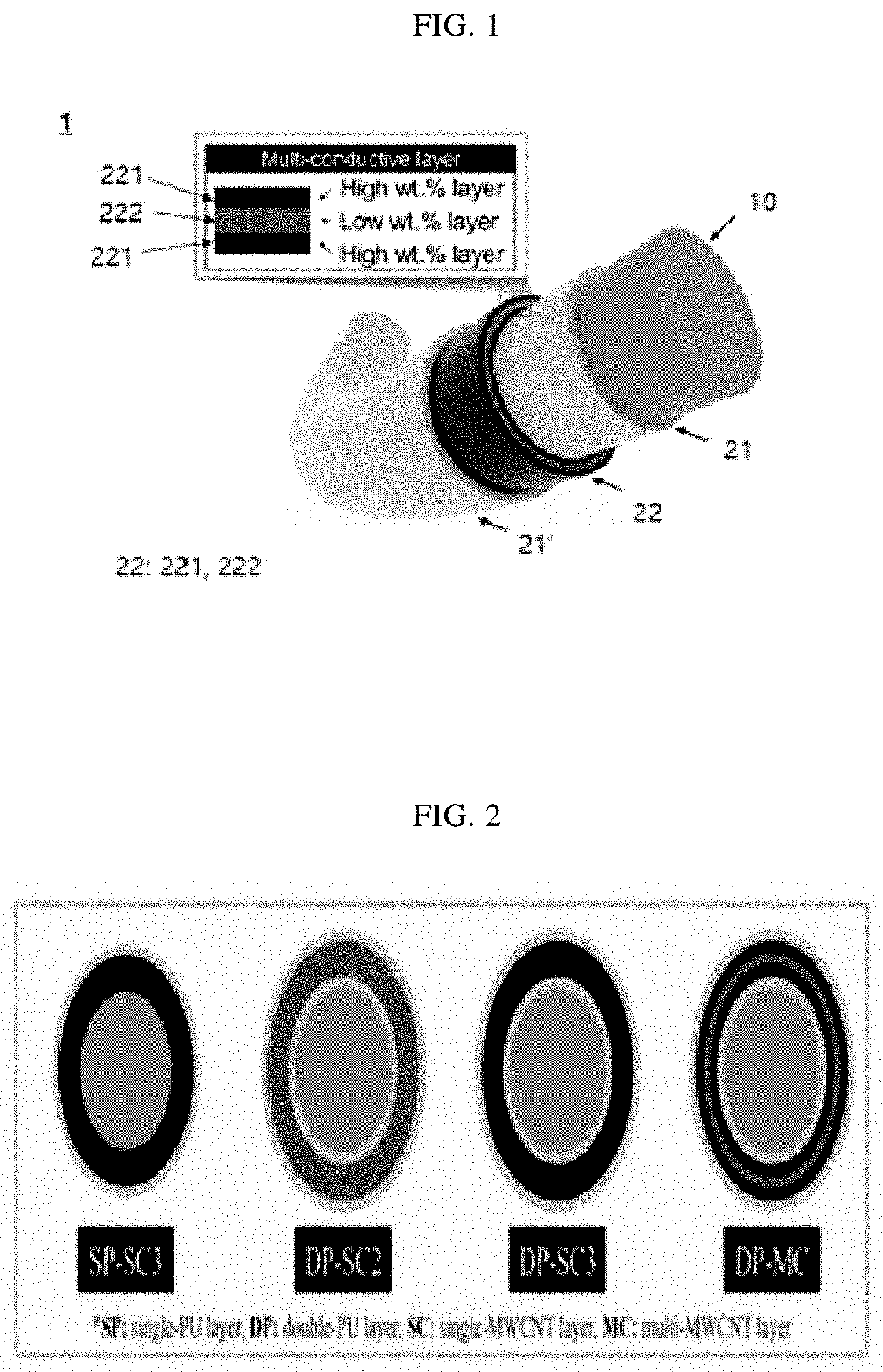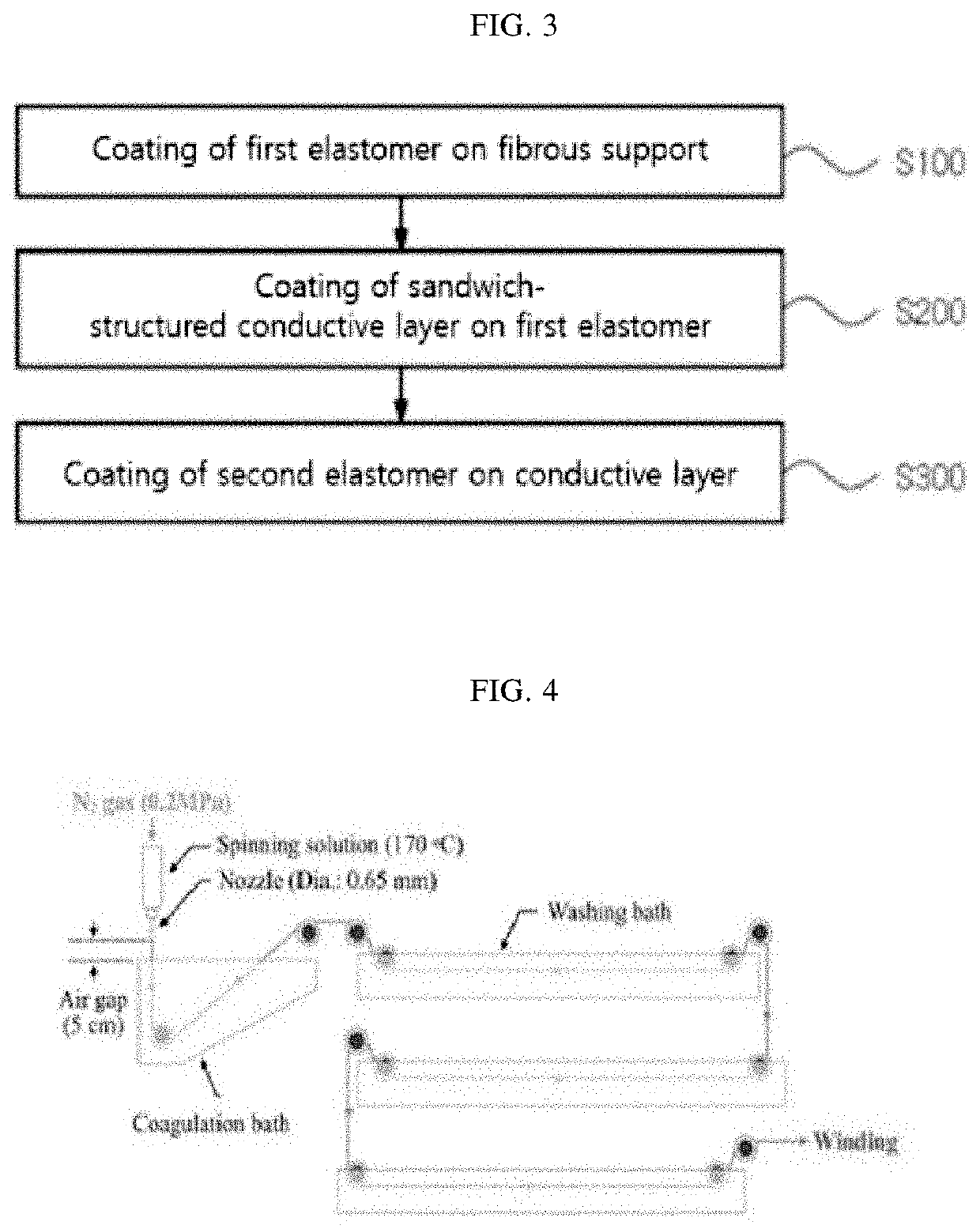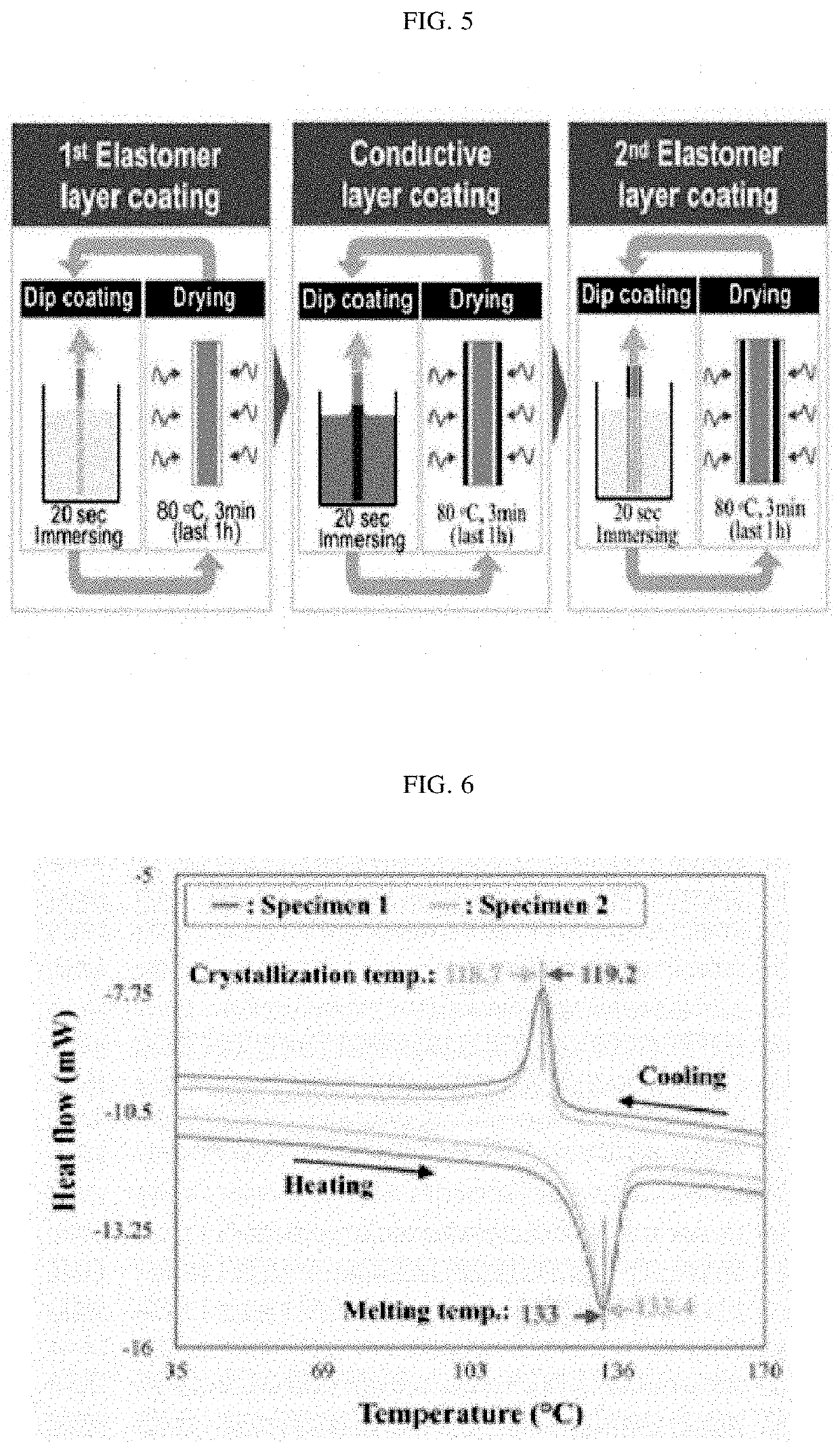Core-shell structured fiber type strain sensor and method of manufacturing the same
a strain sensor and core shell technology, applied in the direction of structural/machine measurement, force measurement, instruments, etc., can solve the problems of composite defects, inability to embed multiple sensor nodes, and fracture at the interface between reinforcing fibers, etc., to achieve stable strain, improve noise level, and strengthen the
- Summary
- Abstract
- Description
- Claims
- Application Information
AI Technical Summary
Benefits of technology
Problems solved by technology
Method used
Image
Examples
examples 1-4
of Core-Shell Structured Fiber-Type Strain Sensor
Preparation of Fibrous Support Forming Core
[0079]An ultrahigh-molecular-weight polyolefin-based fibrous support (core fiber) was prepared through a wet process. Specifically, the fibrous support was prepared using a dry-jet wet spinning system illustrated in FIG. 4.
[0080]First, UHMWPE powder (U050: average molecular weight 5×106 g / mol, Korea Petrochemical) was mixed with paraffin oil (Sigma-Aldrich). Then, the mixture was kept at 100° C. for 24 hours for swelling in order to improve the chain mobility of UHMWPE. After preparing a 4 wt % solution by dissolving the swollen UHMWPE powder in paraffin oil at 170° C. for 4 hours, the molecular chain of the UHMWPE solution was stabilized by storing in a spinning solution syringe at the same temperature for 2 hours.
[0081]Then, UHMWPE core fiber was spun using the dry-jet wet spinning method. The UHMWPE fiber was prepared by supplying the UHMWPE solution to a nozzle under a N2 gas pressure of ...
PUM
| Property | Measurement | Unit |
|---|---|---|
| temperature | aaaaa | aaaaa |
| pressure | aaaaa | aaaaa |
| melting temperatures | aaaaa | aaaaa |
Abstract
Description
Claims
Application Information
 Login to View More
Login to View More - R&D
- Intellectual Property
- Life Sciences
- Materials
- Tech Scout
- Unparalleled Data Quality
- Higher Quality Content
- 60% Fewer Hallucinations
Browse by: Latest US Patents, China's latest patents, Technical Efficacy Thesaurus, Application Domain, Technology Topic, Popular Technical Reports.
© 2025 PatSnap. All rights reserved.Legal|Privacy policy|Modern Slavery Act Transparency Statement|Sitemap|About US| Contact US: help@patsnap.com



